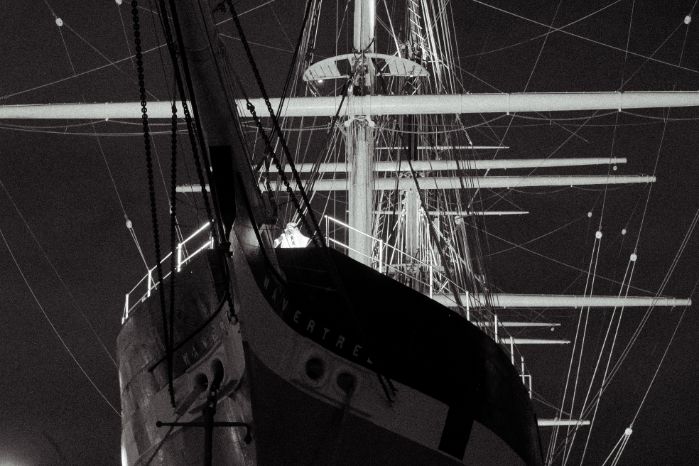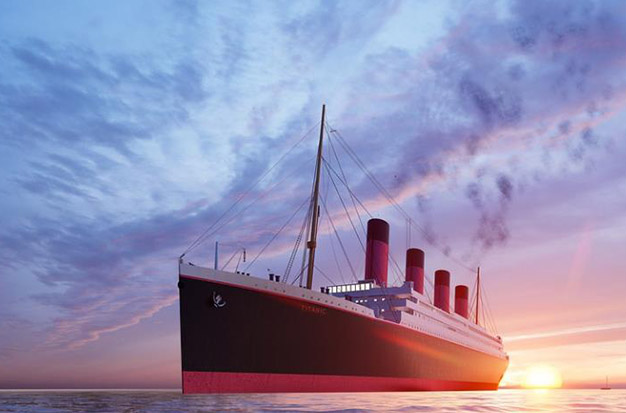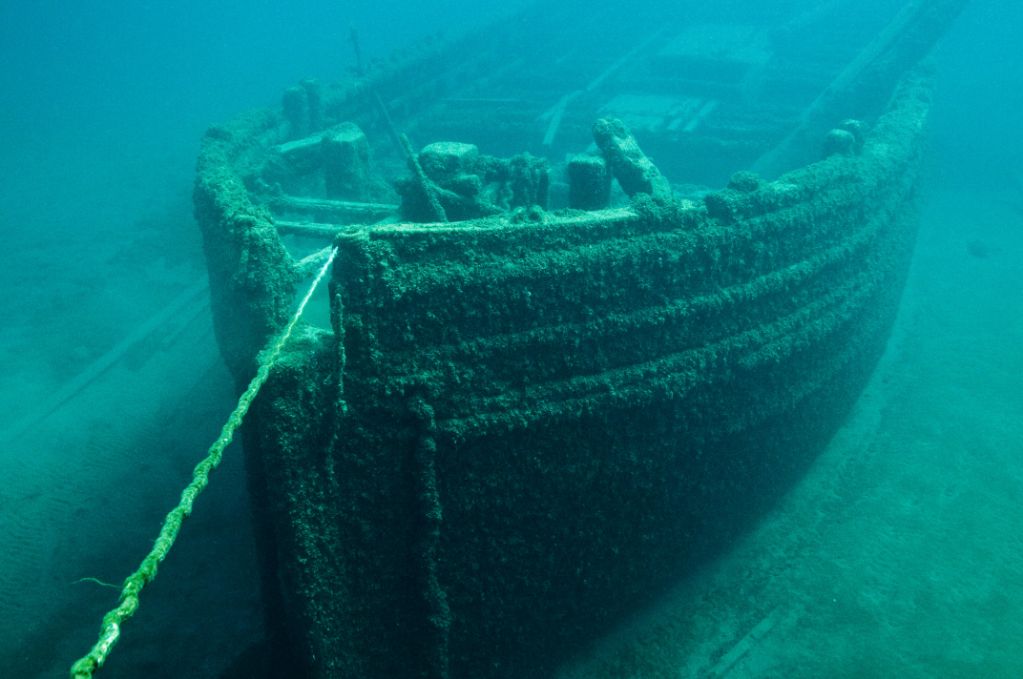In the accident of Titanic, nearly 1,500 people died in the sinking did so from the shock of the frigid water. One of the deadliest maritime disasters to occur during a time of peace. However, how cold was the water when the Titanic sank? I’ll go over the main details in this article.
The RMS Titanic was a luxury ship sailing from Southampton, England, to New York.
One of the fastest ships ever built at the time was the Titanic, which was constructed in Belfast. The ship’s hull contained 16 compartments that were specifically created to be watertight compartments, which meant that it could make a hole without causing the ship to sink. When measured from stern to bow, the ship was 883 feet tall.
But unfortunately, the compartments’ poor design led to the deadliest maritime catastrophe.
How Cold Was The Water When The Titanic Sank?
Due to its collision with a sizable iceberg, the Titanic ship sank into the North Atlantic Ocean off the coast of Newfoundland. When the Titanic sank, the water was 28°F, or -2°C. This temperature is regarded as fatal because it is below freezing. The incredibly low temperature is thought to be what caused the majority of those who were in the water to pass away.
Nevertheless, it is speculated that the water’s temperature was around 79°F, which can cause mortality after prolonged exposure; at roughly 79°F, one can pass away within an hour. Some people died within 15 minutes due to hypothermia, which can occur at temperatures around 32°F. When the Titanic sank, the ambient temperature was about 4.1°C.
Rescue workers calculated that at 50°F, 50% of the victims would perish within 50 minutes. At this temperature, you will likely start to experience hypothermia within 15 minutes and eventually pass away between 30 to 50 minutes, which is when the Titanic sank. There may be a few survivors, but not many.
Why Was It So Cold When The Titanic Sank?
A high-pressure cold front from eastern Canada contributed to the Titanic’s sinking by causing the air and water to be so chilly. Just 39°F (4°C) in the air and 28°F (-2°C) in the ocean were the temperatures when the ship sank, which happened in the middle of the night at 11.40 p.m.

This wasn’t out of the ordinary because in April, the North Atlantic Ocean’s typical temperature in the area where the Titanic sank ranges between -2 and 2 degrees centigrade.
Did Anyone In The Water From The Titanic Survive?
Between 44 and 48 persons are said to have survived out of the hundreds of people who plummeted into the water when the Titanic crashed. Many of the lifeboats were launched without being fully loaded, which contributed to the significant loss of life. The majority of these were swiftly pulled into lifeboats.
In the Titanic’s icy waters, only one person—Charles John Joughin—had the good fortune to live. He was the principal baker on board. When Charles John Joughin managed to survive the awful event, he applied all of his logical knowledge.
His tale of survival is exceptional. He perished along with the ship as it sank, as he claimed. Until he came across a lifeboat with a man standing on top of it, he was able to live. The only lifeboat that came back to rescue people was this one.
How Long Did Titanic Victims Survive in Water?
Many people who have been declared dead may fully recover even after submersion for up to 40 minutes. The Titanic passengers were not exposed to cold water inhalation into the lungs, simply hypothermia.
It is believed that no human could have survived the harsh weather because the water was frozen. Hypothermia from immersion caused those who did drown to pass away.
However, in many cases where the patient was unconscious, full recovery is still feasible. It is possible to survive even after being immersed for 40 minutes with the heads above the water. Most persons are thought to have frozen to death, also known as the cold shock response.

What Would Have Happened If The Titanic Sank in Warm Water?
The majority of those in the water would have survived if the Titanic had sunk in warm water. Only a few hours after the ship sank, the lifeboat passengers were recovered. Nearly all of them were wearing life jackets.
Even in water up to 70°F (21°C) in temperature, people can pass out in just two hours. As a general rule, the Caribbean’s water typically ranges from 75 to 85 degrees. So perhaps there would have been many more survivors if the Titanic had sunk someplace off the coast of Jamaica.
What Caused the Extreme Cold When the Titanic Sank?
The frigid air and ocean conditions at the time of the Titanic’s sinking were a result of a high-pressure cold front that originated in eastern Canada.
When the ship hit the iceberg at 11.40 p.m., it also sank in the middle of the night., contributing to the chilly temperatures of just 39°F (4 degrees Celsius) in the air and 28 degrees F (-2 degrees Celsius) in the water.
The temperature of the North Atlantic Ocean in the vicinity of where the Titanic sank typically ranges between -2 and 2 degrees centigrade in the early hours of April, so this wasn’t unusual.
Where Did the Titanic Sink?
400 nautical miles south of Newfoundland, Canada, is where the RMS Titanic ran into an iceberg. Especially during that season of the year, this region was well known for its icebergs. Although the Titanic was said to be unsinkable, the captain and crew believed it could withstand such circumstances.
The night the Titanic sank, the waters were unusually still. The crow’s nest crewman’s loss of his binoculars added to the difficulty of the situation. It was difficult to see low icebergs close to the ship because the base of the ship wasn’t being broken by water. He immediately reported to the bridge after being able to see it.

First Officer William Murdock instructed his crew to make a hard starboard turn and to reverse the engine in an effort to make a quick turn to avoid the collision. Captain Edward Smith had retired for the evening when Officer Murdoch made the call, but it was already too late. The ship sustained significant damage when the iceberg scraped against the starboard side.
The boat was weighed down by the incoming water after the iceberg tore through five watertight compartments. The compartments may not have been as watertight as first thought, according to some. It was also noted in later investigations that the rivets’ material may have been problematic.
FAQs
Who Was the Captain of the Titanic When It Sank?
The Titanic’s captain, Edward Smith, had been sailing since he was just 12 years old in 1867. Captain Smith rose through the ranks of his commercial shipping business to become its president in 1875. Captain Edward Smith was chosen by the White Star Line to lead the Titanic on its inaugural trip in order to give him one last sail before he was to retire. The British Inquiry discovered that the claims that Captain Smith was driving too quickly because one of his White Star Line bosses was pressuring him were untrue.
How Long Could You Survive in Titanic Water?
15-45 minutes – the typical maximum life expectancy of the underwater Titanic victims.
Does the Iceberg That the Titanic Hit Still Exist?
From calving to melting, an iceberg in the North Atlantic usually has a lifespan of two to three years. This means the iceberg that sank the Titanic “likely broke off from Greenland and vanished forever by the end of 1912 or sometime in 1913 after leaving in 1910 or 1911.”
What If the Titanic Hit the Iceberg Head On?
When a ship strikes an iceberg head-on, all the force would be returned to the ship, causing it to crumple rather than rip open, resulting in only a few compartments being breached. Four compartments were designed to be breached and still function.
What If the Titanic Turned Right?
No clear solution exists, but it would have sunk regardless. It’s not like hitting a brick wall head-on when you run into an iceberg because the ship below the water line will run into the iceberg before the ship above the water line, changing the course of the ship.
Did the Titanic Explode?
No, the Titanic did not explode when it hit the iceberg. Although many surviving passengers reported hearing an explosion, there was no evidence of an explosion when the Titanic was rediscovered. Most people who believed that the Titanic exploded were quick to believe that it was the boilers exploding, but the boilers were perfectly intact when Robert D. Ballard and Jean-Louis Michel found the Titanic.
In the Movie, Could Jack Have Fit On the Door with Rose?
Fans (and non-fans, to be fair) have been debating whether Jack needed to perish ever since the 1997 Titanic movie came out because it appeared that there was plenty of room for him on the broken door that Rose is floating on.
Jack and Rose might have both physically fit on the floating door debris at the Titanic movie’s conclusion. They would have needed to utilize life jackets to support the frame because it would not have been buoyant enough to support them.
James Cameron, the director of the film, has responded by claiming that the film was never about space but rather buoyancy and that Jack’s additional weight would have made the improvised raft sink. That defense also makes logic.
Conclusion
Most persons who perished did so because they tried to fight rather than float or tread water, according to recent advertising efforts intended to help people who swim in the ocean survive if they are caught in a riptide.
Think how much worse it would have been for passengers who were already in a panic after learning their ship was sinking, and then imagine what it would have been like to hit the icy water. It’s a terrible way for anyone to pass away, much less 1,500 people at once.


